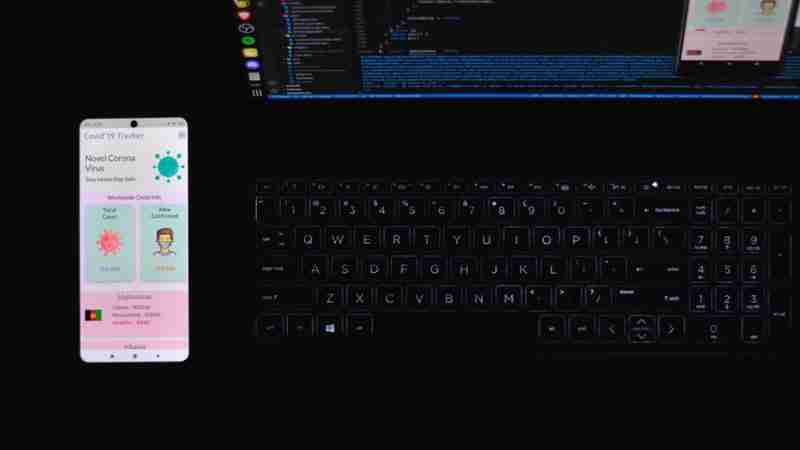Choosing a mobile app type is confusing since wide varieties are available with their plus and minus values. If your goal is to conquer both Android and iOS, the hybrid mobile app is the answer. What is a hybrid mobile app?
If you are curious and want to dive deeper into this cross-platform, keep scrolling through this article is the right thing to do. Because here, we are discussing what it is, how it works, and what the plus and minus things are that you can get by having this app.
What is a Hybrid Mobile App?
We can call the hybrid mobile app a two mixtures: it has elements of native and web solutions, and it shares a single code that can be run on multiple platforms. What does it mean? Okay, let’s break it down here.
A hybrid mobile app, often it’s called cross-platform, is an app that is written in web technologies (using CSS, HTML5, and Javascript). However, it doesn’t run in the user’s browser. It’s run on its own embedded browser with its native that we call webview. It’s like a mini version of chrome that allows you to open the link within the app, so you don’t have to leave the app to open the link. In Android, we call it Android system webview, and in iOS, it’s called WKWebView
Since it’s a blend of native and web apps, the hybrid type has several unique features. It can be integrated with web-based services and mobile device file systems, has an embedded browser that can increase online experience, and can be used in different platforms using a single code base only.
How Does it Work?

After finding out what a hybrid mobile app is, now it’s time for you to figure out how it works. Basically, hybrid apps work like web apps in a native package. Unlike web apps that can be accessed through a browser, this cross-platform app can only be downloaded in each platform’s respective app store. It’s deployed in a native container that uses a mobile webview object.
With the help of web technologies (HTML5, CSS, and Javascript), it can show the content once the app is opened. Since it has a native app element, a cross-platform app can access a device hardware feature such as a camera, accelerometer, maps, etc.
Advantages of Hybrid Mobile App

After knowing the answer to what is a hybrid mobile app, it’s time to learn the advantages of this cross-platform app.
Lesser Time
Since it uses only a single codebase that can be used for various platforms, you can save much time on developing, testing, making app submissions, and updating. You can cut almost half of it since handling it takes a faster time. So, if you want to bring your product to life, cross-platform is a better decision.
Lower Cost
Lesser time means lower cost. Compared to a native, a hybrid mobile app is 30% cheaper because you don’t have to pay for many things to customise your app.
Bigger Market Reach
Broader market reach which is what a hybrid mobile app can be proud of. Just by making one effort, you can target users from different targets at the same time. We can say, it’s a good marketing strategy.
Easier Fix and Maintenance
You only need to fix something once and do the same thing to other platforms when something goes wrong.
Disadvantages of Hybrid Mobile App
Here are some disadvantages of the hybrid mobile app that you may find while using this cross-platform app.
Limited Function
Even though the cross-platform app can access a mobile device’s hardware, some limitations emerge based on the hybrid mobile framework you choose. For example, the Xamarin framework is not ideal for game development.
Uncomfortable User Experience
Sometimes, cross-platform apps cannot accommodate a high-functionality user interface just like native apps, and that will decrease user experience.
New Features Delay
When Google release a new feature for iOs and Android, hybrid app developers have to wait a while to add it to a hybrid mobile app. It is because Google releases a software development kit or SDK for native faster than for cross-platform.
Hybrid Frameworks

What is a hybrid mobile app framework? It is a software creation platform consisting of tools, programming interfaces, compilers, software, debugging tools, and many other things to support the app. There are several frameworks of hybrid frameworks that you can choose from, such as:
- React Native
- Apache Cordova
- Ionic
- Xamarin
- PhoneGap
Examples of Hybrid Apps

Here are some Hybrid apps examples that might you might have used it before you knew there were hybrid, such as:
- Gmail
- Uber
Takaways
Now you know a hybrid mobile’s advantages, disadvantages, frameworks, and examples. If you are looking for something that can reach broader audiences in various mobile operating systems, is budget-friendly, and is time-saving, a hybrid mobile app is the best choice.
Explore your needs and business more to ensure that you choose the best one. We’re ready to show you the best path if you need somewhere to start.
Upscalix is a Melbourne-based digital solution that can help anyone, including you, to create their dream app or software and bring it to life at its best. We have expert designers, developers, and QA teams that can make the best hybrid app based on your needs.
Besides the hybrid app, we also have expertise in other custom software such as business automation, website and app development, and IT-related things.
If you are interested in other services that we can provide, feel free to contact us right now!




